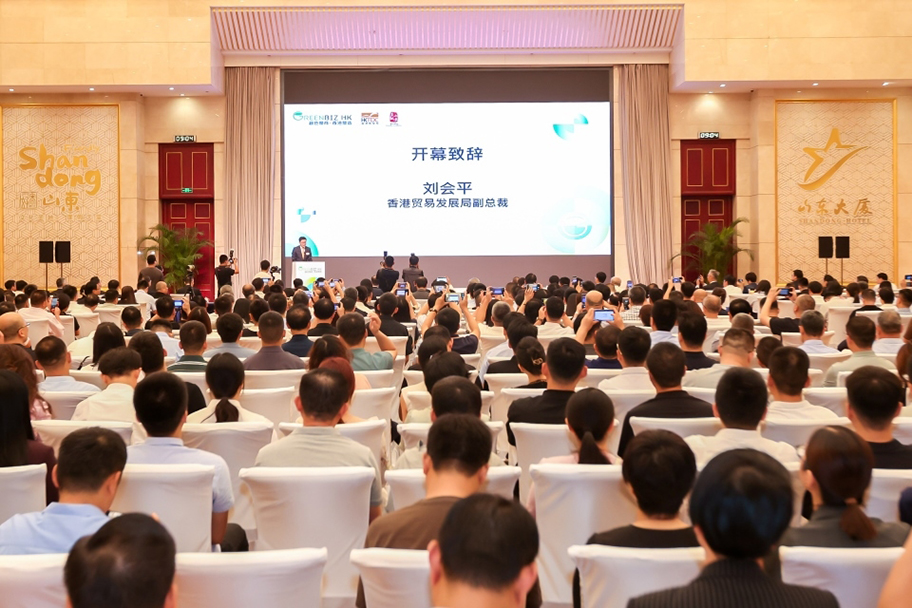China and Vietnam's Ambitions Converge in BRI Infrastructure Projects
Despite their differences, China and Vietnam both have much to gain under the ambitious Belt and Road Initiative.
Will prospects for the Hai Phong port be clearer thanks to BRI investment?
Although Vietnam has achieved remarkable economic progress in recent years, its poor infrastructure is still seen as likely to blight any future development. In particular, major network upgrades to its transport, power and technology systems are desperately needed if it is to deliver the smoother and more cost-effective trade flow that is vital for success in the region's increasingly connected markets.
In light of this, it could be argued that China's ambitious Belt and Road Initiative (BRI) could benefit Vietnam enormously. Under the terms of the BRI, China will help fund and construct a world-class network of high-speed railways, motorways, pipelines and ports across South Asia and Southeast Asia, with Vietnam seen as a key component of this blueprint for economic revitalisation.
Vietnam's strategic location and ease of access to its ASEAN neighbours has seen it earmarked for a pivotal role in the BRI. Indeed, its co-operation is required if China is to make good on its promise to deliver a series of trade routes running from Fujian, passing through Southeast and South Asia and onwards to Europe.
A particular focus is the planned upgrade of North Vietnam's Hai Phong port, a development seen as a priority under the terms of the BRI. A US$1.2-billion project, it has been divided into two distinct phases.
Phase one is the actual construction work on the port, a project to be managed by the Vietnam Marine Administration. The second phase is a joint venture between a number of Vietnamese and Japanese enterprises and will involve the construction of two wharves with a total length of 750 metres, giving the port the capacity to service 100,000-tonne container ships.
Once fully operational, the facility will form part of a direct trade link, connecting China and Vietnam's northern region with the US and European markets, while bypassing Singapore. Outlining the priorities driving the development, Nguyen Hung Viet, the General Director of the Hai Phong Port Joint Stock Company, said: "This year, we will focus on investing in the Tan Vu terminal, Hai Phong's leading facility. We plan to enlarge its yard by a further 10 hectares, giving it total yard area of 55 hectares. We will also be building additional administration facilities. Further investments will include the provision of new piers, wharves and cranes."
Despite the obvious economic benefits to both parties of enhancing Vietnam's infrastructure and its connectivity to China, a number of sensitivities remain. In addition to the ongoing territorial dispute regarding the South China Sea, Vietnam has also expressed concerns about the quality of the construction work, the sustainability of the project and about any possible environmental damage.
Highlighting this, a statement from OBOR Watch, a self-appointed monitor of the progress of the Initiative, said: "China's business practices have excited local protests in several countries where state-owned enterprises have constructed energy and infrastructure installations. Indeed, a number of Chinese firms have been accused of cutting corners, ignoring safety standards, and using second-hand or low-quality materials and equipment."
Despite such concerns, Chinese investment in BRI-related projects is still being officially welcomed in Vietnam. During a September 2016 summit in Beijing, attended by the Vietnamese Prime Minister Nguyen Xuan Phuc and the Chinese Premier Li Keqiang, the two sides publicly reaffirmed their commitment to the BRI and to the investments that have already been agreed. These include the China Export-Import Bank's 2013 financing of the Ninh Binh coal-based fertilizer plant and, in the same year, the China Development Bank's investment in Phase One of the Vung Ang Power Plant.
China is also playing a significant role in the development of Vietnam's railway infrastructure. To this end, China Railway Sixth Group Company has been awarded the contract to construct the Cat Linh-Ha Dong urban railway project in Hanoi. China has provided most of the $550 million funding for the project through preferential credit loans of about 1.2 billion yuan ($169 million), as well as through another $250 million in concessional loans.
Another cornerstone BRI project that was high on the agenda at the Beijing summit was a standard gauge upgrade to the rail link between Lao Cai on the border with China's Yunnan province and Hanoi and Hai Phong. Once completed, this will allow greater trade volumes to be carried along the line, a necessity given the expanded capacity of Hai Phong's port capabilities once its own upgrade has been completed.
Geoff de Freitas, Special Correspondent, Ho Chi Minh City






